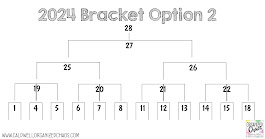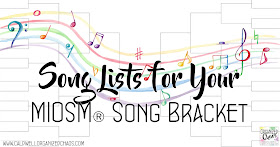I love using centers in my elementary music classroom but it took me a while to figure out how to run them efficiently and effectively in my short, 30-minute class periods. Now they run like clockwork! Here's how I manage the logistics of centers to keep them running smoothly.
1. Group size
I've found groups of around 4 students to be the ideal size for making it realistic for everyone to feel like they had a turn but also having the critical mass to make it feel like a fun group activity. I determine the number of centers I'm going to have based on how many total students I have in the class so they will be split up into groups of around that number.
2. Setup
I keep materials for all of my favorite center activities easily accessible and put together so I can quickly pull out the ones I want. Before class I try to think through the best locations to put each station around the room so that the ones where students will want to be able to hear themselves the most are next to quieter ones. I don't set out the center materials in their planned locations beforehand though- I've found it works best to have everything ready at the front of the room, and at the beginning of class, quickly explain/ review each center activity with students from the front of the room, and then place the materials out in their assigned locations around the room as I go, so students can see everything and hear the explanations more easily.
Once I explain and show what they are doing at each center, I number off the students (based on the number of centers I have) and then tell each number group where to go for their first center. I tell them they should start right away when they get to their station, warning them that each rotation will be quick, and tell them that when the lights turn off they need to stop and clean up immediately without going to another station.
3. Running the centers time
I rarely, especially in the younger grades, create a station that requires my ongoing presence. I try to make them all self-managed so I can circulate, monitor, and keep my focus on managing any group dynamic issues rather than running the activities themselves. For any centers that require students to take turns, I try to keep an eye on who has had a turn and, if I reasonably can, make sure everyone gets a turn before I tell them to stop.
When I decide it's almost time to switch, I give students a 1 minute warning so they know they need to wrap up what they're doing, then I turn off the lights when it's time to finish. I always make sure every station is put back the way it was before I tell them, with the lights still off, where they will be going next, reminding them not to move until the lights turn on. Then I make sure they know they have to walk (or else they will have to go back and try again), and turn the lights on so they can all move at once to their next center. I always try to leave a few extra minutes at the end of class to have students bring the materials back to the front of the room and line up the same way we normally do.
4. Logging
Since each class only does centers a few times each school year, it has been really helpful for me to keep track of which center activities they do each time. Each time they do centers I keep most of the activities the same to cut down on the explanation time but I always make sure to include one or two new ones to keep it interesting.
5. Center activities
I have tried a lot of different center activities and I do like to change them up, but I do have some standard centers that I do in almost every grade, pretty much every time (each class usually does centers around 3 times a year, so not very often):
Grades 1-6
-Instrument dice (roll 2 dice, one with instrument names and one with 4 beat rhythm patterns, then play the rhythm they roll on the instrument they roll)
-Chromebooks (chrome music lab, note letter name games, groove pizza, mario paint, incredibox, etc)
-Instrument exploration (I pick one instrument they don't get to have "free play" time with often- keyboards, ukuleles, glockenspiels, collection of unusual small percussion)
-Kaboom rhythms (draw a popsicle stick out of a jar and clap the rhythm on it correctly for a point, but if you get a "kaboom" stick you lose all your points)
Grades 1-3
-Reading (I have a bookshelf with music-related books and old music express magazines)
-Rapping (one person picks out different mini erasers and lines them up, the rest of the group "raps" the sequence by saying the name of each mini eraser shape on the beat)
Grades 4-6
-Truth or dare (choose to take one card from either the truth deck or the dare deck- truths are music facts/ questions, dares are music tasks- here are the printable cards I use)
Those are the ones I use most regularly but there are tons of others I use that my students and I love- you can find lots more center activity ideas (and more detailed explanations for the ones mentioned here) in these previous blog posts:































